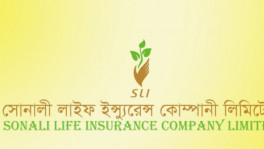How the search for flavour spread the plague
While spice trade through the Silk Road brought about fortunes and riches for the traders as well as the trading nations, the medieval superhighway, unfortunately, had a much darker and fatal legacy

If I told you that the pepper, cinnamon and cloves in your kitchen are the reason we all had to endure such a turbulent year of pandemic-ridden anxieties, you would think that I am one of those anti-vaxxer nuts who keeps blabbering on the efficacy of drinking bleach. Relax! No need to get on the high horse just yet. You don't have to stop enjoying the spicy naga burger you love so much. It's just a harmless joke.
This joke, however, would not have been so harmless back in the 15th century when the Black Death spread throughout entire continents because of the spice trade. Before delving into that, a bit of backstory to the spice trade is obligatory.
Spices were the most-coveted luxury in the middle ages
Spices like pepper, cinnamon, cloves and cardamom have become so ubiquitous in food nowadays that most people cannot fathom that they were the most coveted products during antiquity.
Back in those days, spices were a rare luxury only the rich and the fortunate could afford, let alone being a run-of-the-mill product. Pepper, an inconsequential spice in the modern times, was worth its weight in gold during this period. The same could be said about a lot of other spices. Spices were often valued as a symbol of wealth and power during the ancient times.
So it was quite understandable that every trader- ranging from the Arabs in the Middle East to the Romans in the West- sailed in search of these much-fabled products, eventually resulting in the creation of one of the most intricate networks of land and maritime trading routes in the middle ages. The ancient Silk Road and the maritime spice routes are quite prominent for their role in pioneering present-day international trading networks and globalisation.
The Silk Road brought the Europeans in contact with the Far-East and the South-East Asian Island nations. Trading with them, the Europeans could appreciate luxurious spices like mace, cloves, cinnamon, black pepper etc., tea leaves, leather goods, to almost everything. Truly, the Silk Road was a remarkable achievement of the middle ages.
The lethal legacy of the spice trade
While spice trade brought about fortunes and riches for the traders as well as the trading nations, the medieval superhighway, unfortunately, had a much darker and fatal legacy.
The Silk Road and the maritime spice routes also harboured a network for infectious pathogens: most infamous of them was Yersinia pestis- the bacterium strain responsible for the Black Death, also known as the Plague.
According to scientists, the search for flavours probably capacitated the first, sustained transmission of these pathogens endemic to the East, to spread out along the road to the European provinces, through the spice trade.
Yersinia Pestis spread throughout the European region, reportedly originating from Asia (there is debate regarding the origin and the direction of transmission among scientists) through the Silk Road and other maritime trading routes. The bacterium eventually killed more than 50 million people between 1346 and 1352. The Black Death affected hundreds of millions of people spanning the Western European nations to Russia and Central Asia.
Later epidemics in Europe were also believed to have originated in the East and transmitted via a similar route. Scientists recently discovered evidence that a virulent strain of the Yersinia pestis haunted Europe for centuries while also working its way back to Asia.
Why was the Silk Road so effective in pathogen transmission?
The Silk Road was extremely effective in transmitting virulent pathogens, primarily because it constituted a vast network of land as well as maritime routes. These routes were spread around the globe like spider webs or blood vessels, connecting hundreds of cities, provinces, ports and trading outposts called caravanserais- from the Mediterranean to Central Asia.
Caravans of traders travelled back and forth along these routes; so did merchant ships. These caravans and ships used to carry spices like mace, cloves, pepper etc. among other coveted products. In the process, the traders and their animals came in contact with foreign pathogens and carried it over from outpost to outpost resulting in the wide-spread transmission of infectious diseases across continents.
For instance, Yersinia Pestis was predominantly carried by rodents. However, the bacteria was forced to leave its rodent hosts due to fluctuations in the climate and latched on to travelling traders and their camels. Eventually, the trading caravans allowed it to spread westward and reach the edges of Europe, where it wreaked havoc in repeated waves over the next few decades in the West.
Apparently, the Black Death strain persisted in Europe for at least three centuries - as found by researchers based on DNA sequences collected from eight skeletons. These skeletons were retrieved from two burial sites in Germany that spanned the 14th century to the 17th.
While the Silk Road and the spice routes will forever be remembered as one of the most awe-inspiring achievements of the human civilisation, the legacy it left behind also serves as a grim reminder against the risk of unchecked globalisation and its repercussions; something mankind has become very familiar with over the past twelve months.


 Keep updated, follow The Business Standard's Google news channel
Keep updated, follow The Business Standard's Google news channel














